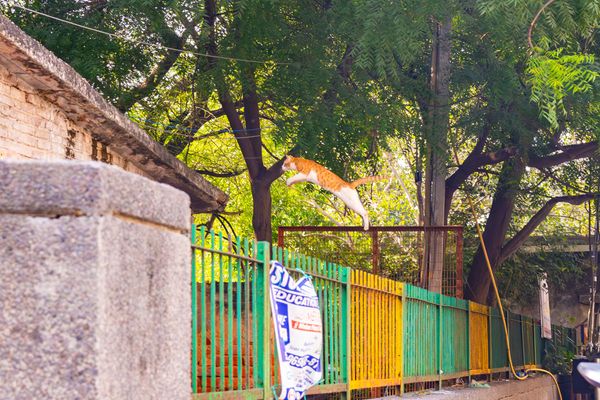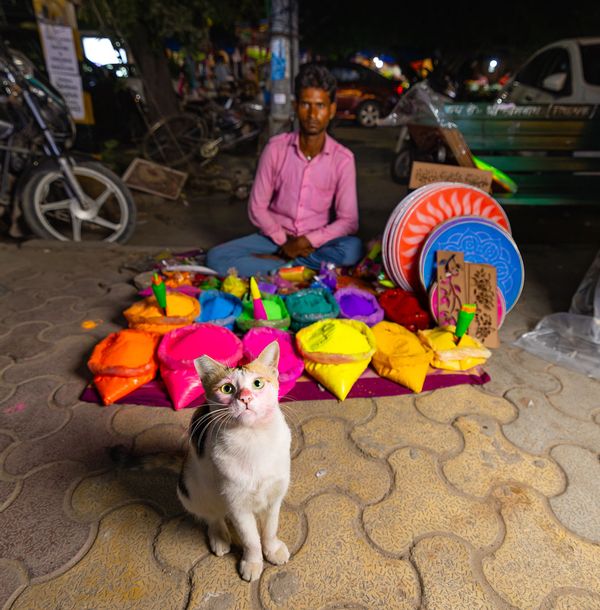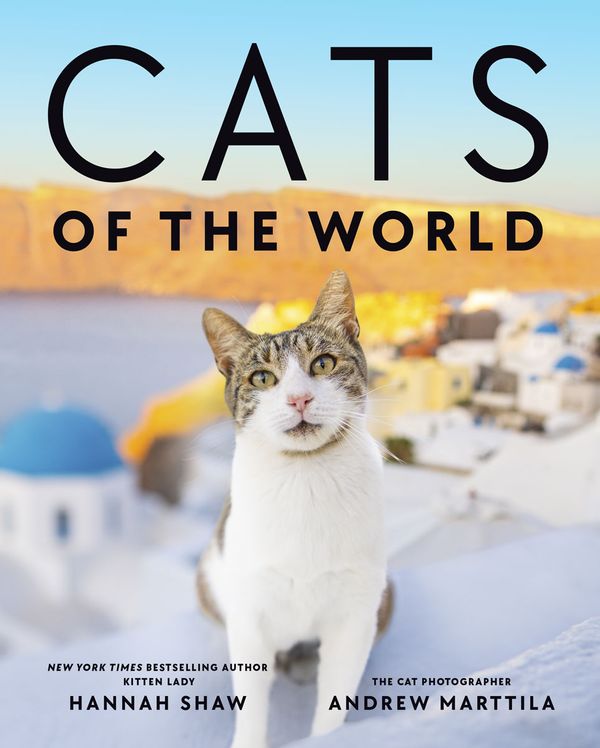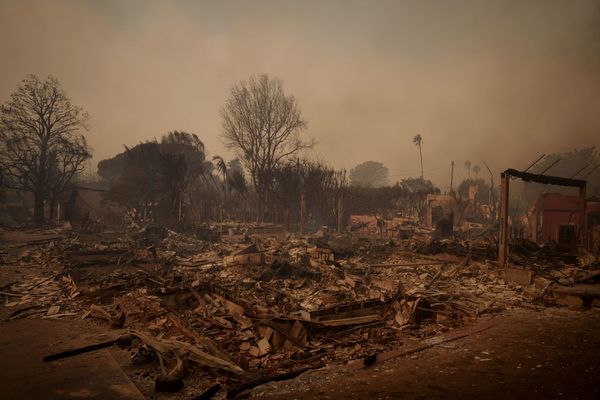
As you walk through Delhi, there is much to take in at street level. The sweet scent of food carts selling guava and bananas blends with blooming jasmine, burning incense, and the fragrant fumes of auto rickshaws driving by. As the city awakens, motorbikes weave through the streets in a hurry, and any driver will tell you that it’s dogs and cows—not cats—around whom they will swerve on their morning commute. But look up, and your perspective will shift entirely. A thick canopy of lush green leaves seems to pour from the sky onto the rooftops, and in that overhead oasis, you’ll find that it’s the cats of Delhi who have a bird’s-eye view of it all.
“You won’t actually see many cats in Delhi . . . unless you look on top of the buildings,” explained Anupriya Dalmia, founder of Dogs of Delhi. Due to the ubiquity of street dogs, who can pose a threat to felines, most cats have made a life leaping from roof to roof. As canine sterilization efforts like Anupriya’s have started to stabilize the dog population, she and others are turning their attention upward.
Perspective influences everything, and for the young people of Delhi, mindsets around feline welfare are rapidly changing. “Cats aren’t a traditional pet in India, so older generations have never really opened up to them,” explained rescuer Saara Gupta as we walked through her South Delhi neighborhood. “My family actually says I’m not normal because I don’t want to have kids, and I care about cats. This is a concept that is not yet accepted here.”

Mansi continued, “As India has become a more multicultural space, people have had greater access to knowledge from other cultures—and there has been a large mindset shift between generations.” She showed me a photo of a kitten she rescued and smirked. “Honestly, I also think young people like a little rebellion. Having a pet cat is like an ‘F you’ to the parents, because they do not accept it at all.”
In the Moti Bagh neighborhood, one young woman has transformed her home into a haven for the cat community. Blue tarps stretch over the brightly colored brick walls of the open-air structure, and a tight spiral of steps and ladders leads up three thin flights to where Vaishali has a small bed for herself, with the rest of the space dedicated to housing cats recovering from surgery. Local rescuers shuffle in and out of her home at will; it is a streamlined community space as much as it is a residence. Upon the balcony, ear-tipped cats perch and look over the beautiful produce markets below, where Vaishali’s neighbors sell fresh fruits and vegetables.

Autumn brings clay lamps and marigold garlands to the marketplaces of Delhi as people prepare for Diwali, the Festival of Lights. In one Hauz Khas market, a tricolor cat named Kittu had a curiously pink face. "She looked inside a bag of powdered color," a vendor laughed, pointing to a row of fluorescent sand, which is used for rangoli art. The curious calico and her orange tomcat friend, Monu, had recently been sterilized and returned to the market.
The oldest and busiest market in the city is Chandni Chowk, a sprawling area in densely populated Old Delhi, which will awaken your senses like nowhere else. Flavorful street food sizzles on every corner, rickshaws and scooters blare their horns in symphonic competition, and cats and dogs thread between your legs as pedestrians shuffle shoulder to shoulder. Overhead, a web of tangled cables weaves between buildings, and if you pause to look up, you’ll almost certainly find a cat lounging above you.
While the larger roads of Old Delhi are packed with people, it's the quieter side streets where you'll often find the felines. These winding, narrow walkways are lined with motorbikes—the primary mode of transportation in the busy city—and it's common to spot a cat warming a bike seat as they rest. When they wake, there's an abundance of food to find, and countless butchers from whom to seek scraps.
Perhaps the most significant landmark in Old Delhi is the Jama Masjid, one of the largest places of Muslim worship in all of India. As we climbed the steps leading to the iconic seventeenth-century mosque, we glimpsed a tiny tabby tiptoeing through the gorgeous courtyard, which is surrounded by tall red sandstone gates. "Muslims are generally kind to cats here because of the Prophet Muhammad," explained Sumit Singla, an adoption coordinator who visited the mosque with us.
Religion plays a large role in each adoption interview Sumit conducts, due to the beliefs and rituals common in the region. “During certain periods, Hindus will fast, and not have meat or eggs in the home. When I do adoption checks, I have to ensure the family will be willing to have cat food in the home at that time, and I do sometimes have to reject applications for people who refuse," He explained. Meat is commonly forbidden from Hindu temples, and seeing a cat inside Hindu places of worship is therefore quite rare.

But for young Hindus like Mansi, helping animals is part of their spiritual practice. "Some people ask me: 'There are so many people suffering and in poverty, how can you care about animals?' But I tell them: 'Hinduism says to value every living being,'" she said. "I invoke that we assign divinity to all living beings. Cats are also a manifestation of God. Your creator put them here."







